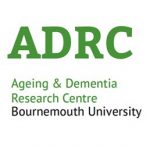I (Marilyn Cash, HSC) recently had the opportunity to visit De Hogeweyk a nursing home in the Netherlands that provides care to 152 people in the later stages of dementia. Unlike traditional nursing homes, De Hogeweyk is designed as a small self contained village with 23 individual homes, a supermarket, a hair and beauty salon, restaurant, theatre and traditional Dutch ‘brown cafe’. The homes are designed to reflect seven different typical Dutch ‘lifestyles’, identified by Motivaction a social research agency:-
1. Traditional for residents whose identity came from carrying out a traditional profession
2. City for “urbanized” residents whose life had been spent in the centre of the city
3. “Het Gooi” for residents who attach importance to manners, etiquette, and external appearance
4. Cultural: for residents who appreciate art and fine culture
5. Christian: for residents for whom practicing their Christian religion is an important part of daily life
6. Indonesian: a lifestyle for residents with an Indonesian background
7. Homey: for residents who believe that caring for the family and household is important.
De Hogeweyk allows residents to experience life as if they were living in the community but from within a safe and secure environment. Residents are able to take part in everyday activities in their homes supported by a team of staff and volunteers. They are able to walk freely through the streets and gardens which are designed to reflect normal life with street signs, streetlights, benches and squares where people can congregate. Being able to move freely around not only contributes to their health but also gives a feeling of ‘being at home’. The feeling of normality is further supported by the fact that none of the staff wear uniforms. The scheme has been designed to integrate with the local community and the facilities are open to anyone, not just to residents and their families.
A total of 240 staff (equivalent to 170 full-time jobs) work at De Hogeweyk; this includes, nurses, nursing assistants, physiotherapists, occupational therapists, a full-time doctor and a Psychiatrist. They are supported by 120 volunteers, who are mostly retired people living in the local community. Many of the volunteers live alone and appreciate the social interaction that volunteering gives them. Residents are funded through the Dutch national insurance scheme for long-term care
De Hogeweyk has been criticised for being a deception; but I think that most people reading this would prefer this ‘lifestyle’ to that offered by a traditional nursing home.
 Eating and Drinking Well: Supporting People Living with Dementia – BUDI Research Seminar
Eating and Drinking Well: Supporting People Living with Dementia – BUDI Research Seminar Game On! Enriching the lives of people with dementia through digital gaming.
Game On! Enriching the lives of people with dementia through digital gaming.










 3C Event: Research Culture, Community & Cookies – Tuesday 13 January 10-11am
3C Event: Research Culture, Community & Cookies – Tuesday 13 January 10-11am Dr. Chloe Casey on Sky News
Dr. Chloe Casey on Sky News Final Bournemouth University publication of 2025
Final Bournemouth University publication of 2025 On Christmas Day in the Morning…
On Christmas Day in the Morning… New Nepal scoping review on maternal & neonatal health
New Nepal scoping review on maternal & neonatal health ECR Funding Open Call: Research Culture & Community Grant – Application Deadline Friday 12 December
ECR Funding Open Call: Research Culture & Community Grant – Application Deadline Friday 12 December MSCA Postdoctoral Fellowships 2025 Call
MSCA Postdoctoral Fellowships 2025 Call ERC Advanced Grant 2025 Webinar
ERC Advanced Grant 2025 Webinar Horizon Europe Work Programme 2025 Published
Horizon Europe Work Programme 2025 Published Update on UKRO services
Update on UKRO services European research project exploring use of ‘virtual twins’ to better manage metabolic associated fatty liver disease
European research project exploring use of ‘virtual twins’ to better manage metabolic associated fatty liver disease
Interesting Marilyn.perhaps a model for residential homes generally.
Hi Sarah
Yes, I think it would work as a model for all types of residential homes. Interestingly most of the homes in the Netherlands are run as not for profit homes and places are state funded.
I have read about this community before – and it is truly fascinating and really challenges thinking about care provision. I hope that we get to hear more about your visit at a BUDI event!